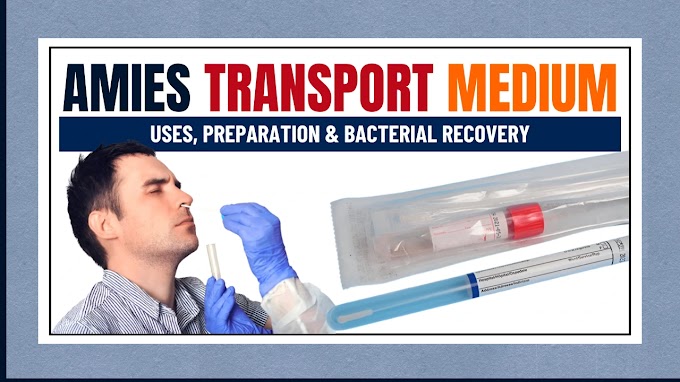Table of Contents
Introduction to Baird Parker Agar:
- Baird Parker Agar was developed by Baird Parker based on the Tellurite-glycine formulation by Zebovitz et al.
- This medium is designed for the isolation and enumeration of Staphylococci in food and other materials, as it facilitates the effective differentiation of coagulase-positive strains.
- The addition of sodium pyruvate serves as a selective growth stimulant, while egg yolk emulsion acts as a differentiation agent. Baird Parker Agar supports the growth of Staphylococcus aureus while selectively inhibiting the growth of most other bacteria.
- Consequently, it is regarded as a selective and diagnostic medium for isolating and enumerating coagulase-positive staphylococci in food products.
Composition of Baird Parker Agar
Ingredients of Baird Parker Agar (per liter)
- Tryptone: 10.000 g
- HM Peptone B: 5.000 g
- Yeast Extract: 1.000 g
- Glycine: 12.000 g
- Sodium Pyruvate: 10.000 g
- Lithium Chloride: 5.000 g
- Agar: 20.000 g
- Final pH (at 25°C): 7.0 ± 0.2
Principle of Baird Parker Agar
- A high correlation has been found between the coagulase test and the presence of a clear zone of lipolysis in this medium, which is due to the lecithinase of Staphylococci that break down the egg yolk.
- Almost 100% of coagulase-positive Staphylococci are capable of reducing tellurite, which produces black colonies, whereas other Staphylococci cannot always do so.
- Tryptone, HM peptone B, and yeast extract are sources of nitrogen, carbon, sulfur, and vitamins.
- Sodium pyruvate not only protects injured cells and helps recovery but also stimulates Staphylococcus aureus growth without destroying selectivity.
- Lithium chloride and potassium tellurite inhibit most of the contaminating microflora except Staphylococcus aureus.
- The tellurite additive is toxic to egg yolk-clearing strains other than S. aureus and imparts a black color to the colonies.
- Glycine and pyruvate enhance the growth of Staphylococcus.
- With the addition of egg yolk, the medium becomes yellow and opaque. The egg yolk additive, in addition to providing enrichment, aids in the identification process by demonstrating lecithinase activity (egg yolk reaction).
- A clear zone and grey-black colonies on this medium are diagnostic for coagulase-positive Staphylococci.
- Upon further incubation, an opaque zone develops around colonies, which can be due to lipolytic activity.
Preparation and Method of Use of Baird Parker Agar
- Dissolve 63.0 grams of the medium in 950 ml of distilled water.
- Heat to boiling to fully dissolve the medium.
- Sterilize by autoclaving at 15 lbs pressure (121°C) for 15 minutes.
- Cool the solution to 50°C, then aseptically add 50 ml of concentrated Egg Yolk Emulsion and 3 ml of sterile 3.5% Potassium Tellurite solution (FD047) or 50 ml of Egg Yolk Tellurite Emulsion (FD046).
- For additional selectivity, if desired, add the rehydrated contents of 1 vial of BP Sulpha Supplement.
- Alternatively, use 1 vial of Fibrinogen Plasma Trypsin Inhibitor Supplement per 90 ml of medium instead of Egg Yolk Tellurite Emulsion for identifying coagulase-positive Staphylococci.
- Mix thoroughly and pour into sterile Petri plates.
- Allow the agar plates to dry briefly before use.
- Using a glass spatula, spread 0.1 ml aliquots of sample dilutions made in Buffered Peptone Water onto the agar surface until dry. Up to 0.5 ml can be used on larger dishes.
- Incubate the inverted plates at 35°C.
- Examine after 24 hours for typical colonies of Staphylococcus aureus.
- If no colonies are observed, re-incubate the plates for an additional 24 hours.
Result Interpretation of Baird Parker Agar
The appearance of black, convex, shiny colonies measuring 1-1.5 mm in diameter indicates a presumptive positive test for the presence of S. aureus. Colonies that do not develop black pigmentation should be considered negative.
Uses of Baird Parker Agar
- Baird Parker Agar is recommended for isolating and counting coagulase-positive staphylococci from food and clinical samples.
- AOAC International has officially adopted its use, and it is recommended in the USP for Microbial Limit Tests.
- The ISO committee also endorses this medium for isolating and counting Staphylococci. Additionally, Baird Parker Agar can detect coagulase activity by incorporating fibrinogen plasma.
Limitations of Baird Parker Agar
- Confirmation of Staphylococcus aureus isolated on Baird-Parker Agar requires a coagulase reaction.
- While the medium is recommended for detecting coagulase-positive Staphylococcus aureus, it can also support the growth of other bacteria.
- Biochemical testing is necessary for definitive confirmation.
- Colonies of certain contaminating organisms near coagulase-positive colonies may interfere by partially digesting the coagulase halo reaction.




~1.webp)

.webp)
.webp)
